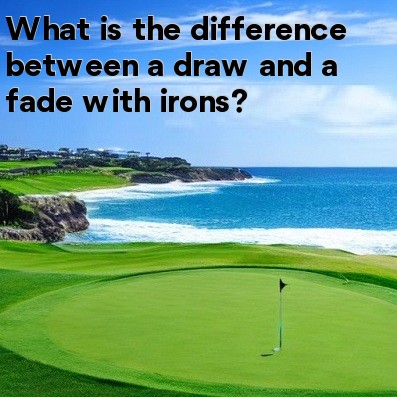
In golf, What is the difference between a draw and a fade with irons?
When it comes to playing golf, understanding the different shot shapes can greatly improve your game. Two common shot shapes in the game are the draw and the fade. While both shots have their place and can be effective, they have distinct differences. Let's take a closer look at the difference between a draw and a fade with irons.
- Draw:
A draw is a shot that starts to the right of the target for right-handed golfers (left for left-handed golfers) and then curves back towards the target. It is known for its right-to-left shape and is often preferred by golfers due to its added distance and control.
To execute a draw, you can follow these steps:
- Correct grip: Make sure you have a strong grip, which means rotating both hands slightly to the right on the club.
- Aim slightly right: Align your body and clubface slightly to the right of the target, this sets the stage for the right-to-left curve.
<li.Body rotation: Focus on a smooth body rotation through impact, with your chest turning towards the target.
<li.Clubface position: At impact, the clubface should be square or slightly closed to the target line.
A well-executed draw can help you navigate troublesome fairways with obstacles on the left side, such as trees or bunkers. It also adds distance to your shots as the ball rolls further after landing.
- Fade:
On the other hand, a fade is a shot that starts to the left of the target for right-handed golfers (right for left-handed golfers) and then curves gently back to the right. It is known for its left-to-right shape and is often used strategically to avoid trouble on the right side of the fairway.
To execute a fade, you can follow these steps:
- Neutral grip: Maintain a neutral grip with both hands, without any excessive rotation.
- Aim slightly left: Align your body and clubface slightly to the left of the target, creating the left-to-right curve.
<li.Body rotation: Focus on a controlled body rotation through impact, with your chest turning towards the target.
<li.Clubface position: At impact, the clubface should be square or slightly open to the target line.
A fade is particularly useful when you need to navigate fairways with trouble on the right side, such as water hazards or out-of-bounds areas. It also comes in handy on approach shots to tucked pins on the right side of the green, as the fade can help stop the ball quicker.
Both the draw and the fade are essential shots to have in your golfing arsenal. Depending on the situation and the hole layout, one shot shape may be more advantageous than the other. Practice and experimentation will help you develop your ability to shape your shots, ultimately improving your overall game.





